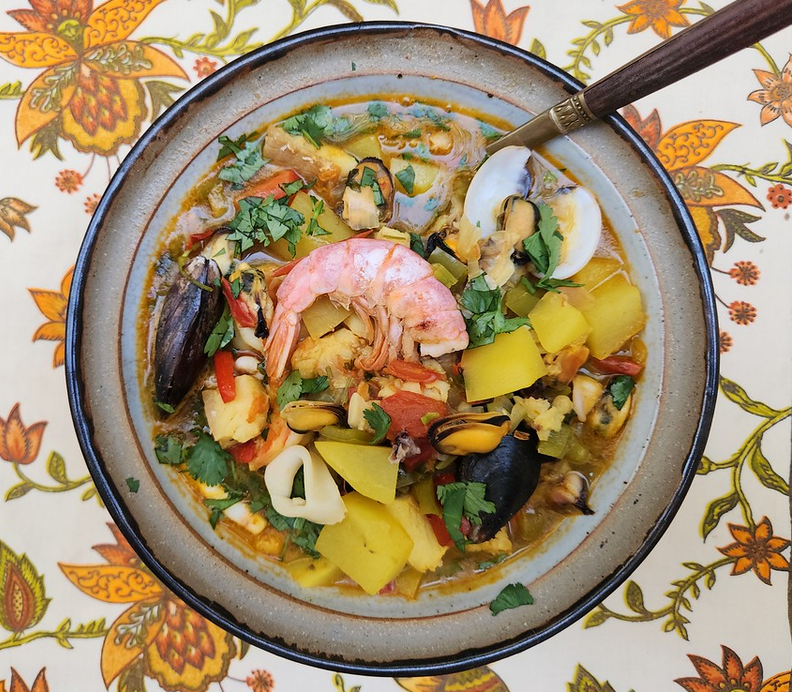Your Window to the World
Please note: the New York Times allows non-subscribers to read five articles a month for free.
Tidings Archive
- Details
- Hits: 922
Our Recipe of the Month is for Tavë Kosi, considered the national dish of Albania. It is a lamb main course that has an unusual but delightful taste. Most of Albanian cuisine is manifestly Mediterranean, but Tavë Kosi is uniquely Albanian.
- Details
- Hits: 1447
Your Window to the World
Please note: the New York Times allows non-subscribers to read five articles a month for free.
Tidings Archive
- Details
- Hits: 1013
Our recipe of the month is for satisfying Locro de Papas potato soup (more properly a stew), considered to be the national dish of Ecuador. With easy-to-find ingredients and just as easy preparation, Locro de Papas is sure to delight either as a side dish or a full meal.
- Details
- Hits: 1988
Your Window to the World
Please note: the New York Times allows non-subscribers to read five articles a month for free.
Tidings Archive
- Details
- Hits: 885
Joomla!
Extensions
The Joomla! content management system lets you create webpages of various types using extensions. There are 5 basic types of extensions: components, modules, templates, languages, and plugins. Your website includes the extensions you need to create a basic website in English, but thousands of additional extensions of all types are available. The Joomla! Extensions Directory is the largest directory of Joomla extensions.
Components
Components are larger extensions that produce the major content for your site. Each component has one or more "views" that control how content is displayed. In the Joomla administrator there are additional extensions such as Menus, Redirection, and the extension managers.
Modules
Modules are small blocks of content that can be displayed in positions on a web page. The menus on this site are displayed in modules. The core of Joomla! includes 24 separate modules ranging from login to search to random images. Each module has a name that starts mod_ but when it displays it has a title. In the descriptions in this section, the titles are the same as the names.
Content Modules
Content modules display article and other information from the content component.
User Modules
User modules interact with the user system, allowing users to login, show who is logged-in, and showing the most recently registered users.
Display Modules
These modules display information from components other than content and user. These include weblinks, news feeds and the media manager.
Utility Modules
Utility modules provide useful functionality such as search, syndication and statistics.
Navigation Modules
Navigation modules help your visitors move through your site and find what they need.
Menus provide your site with structure and help your visitors navigate your site. Although they are all based on the same menu module, the variety of ways menus are used in the sample data show how flexible this module is.
A menu can range from extremely simple (for example the top menu or the menu for the Australian Parks sample site) to extremely complex (for example the About Joomla! menu with its many levels). They can also be used for other types of presentation such as the site map linked from the "This Site" menu.
Breadcrumbs provide users with information about where they are in a site.
Page 4 of 28










